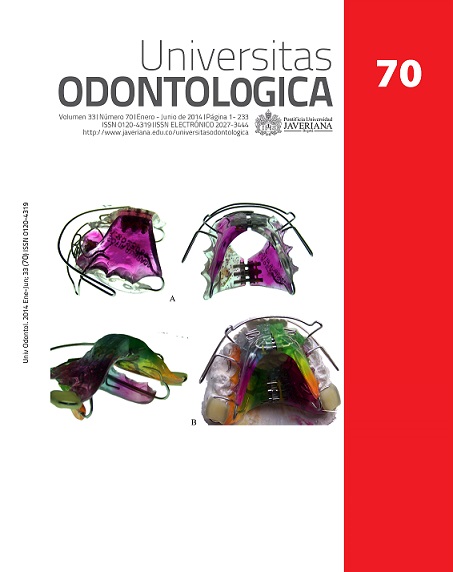Resumo
Antecedentes: diferentes estudios describen el tratamiento ortopédico en pacientes con labio y paladar fisurado con diagnóstico de maloclusión clase III, no existe una estandarización en la técnica de tratamiento ortopédico en estos pacientes.Objetivo: determinar la efectividad del tratamiento con máscara facial y aparato fijo intraoral en pacientes con labio y paladar fisurado con maloclusión clase III, que fundamente su implementación dentro de la guía de manejo integral en estos pacientes. Materiales y métodos: se realizó una búsqueda en múltiples bases de datos electrónicas, y búsqueda manual ,encontrando 198 artículos , a los que se aplicaron como criterios de selección: ensayos clínicos aleatorizados o abiertos, en inglés y español, pacientes con labio y paladar fisurado, en edades 5-12 años, que relacionen maloclusión clase III y/o máscara facial y/o protracción maxilar, evaluados con radiografías de perfil, análisis cefalométricos y observación clínica. Resultados: se seleccionaron 8 artículos a los que se le hizo análisis de calidad, los resultados indicaron que el tratamiento con máscara facial y aparato intraoral fue efectivo en los pacientes con labio y paladar hendido para lograr protracción maxilar, siendo la máscara facial con el aparato de hyrax el que demostró mejores resultados esqueléticos. Conclusión: La máscara facial junto con aparato intraoral de hyrax entre los 8-10 años con fuerzas entre 450g-500g y con una dirección entre 10º-30º bajo el plano oclusal con 12horas-día durante mínimo 9.2 meses de tratamiento mostró en pacientes con labio y paladar hendido los mayores cambios esqueléticos a nivel maxilar y mandibular.
Palabras clave: Maloclusión clase III, labio y paladar hendido, anomalías craneofaciales, expansión maxilar, mascara facial, protracción maxilar.
Este periódico científico está registrado sob a licença Creative Commons Atribuição 4.0 Internacional. Portanto, este trabalho pode ser reproduzido, distribuído e comunicado publicamente em formato digital, desde que os autores e a Pontifícia Universidade Javeriana sejam reconhecidos. Citar, adaptar, transformar, autoarquivar, republicar e criar novas obras a partir do material é permitido para qualquer finalidade (mesmo comercial), desde que a autoria seja devidamente reconhecida, um link para o trabalho original seja fornecido e quaisquer alterações sejam indicadas. A Pontifícia Universidade Javeriana não detém os direitos sobre os trabalhos publicados, e o conteúdo é de exclusiva responsabilidade dos autores, que mantêm seus direitos morais, intelectuais, de privacidade e de publicidade.


